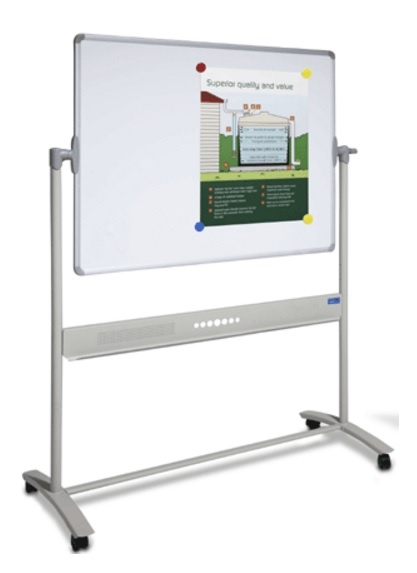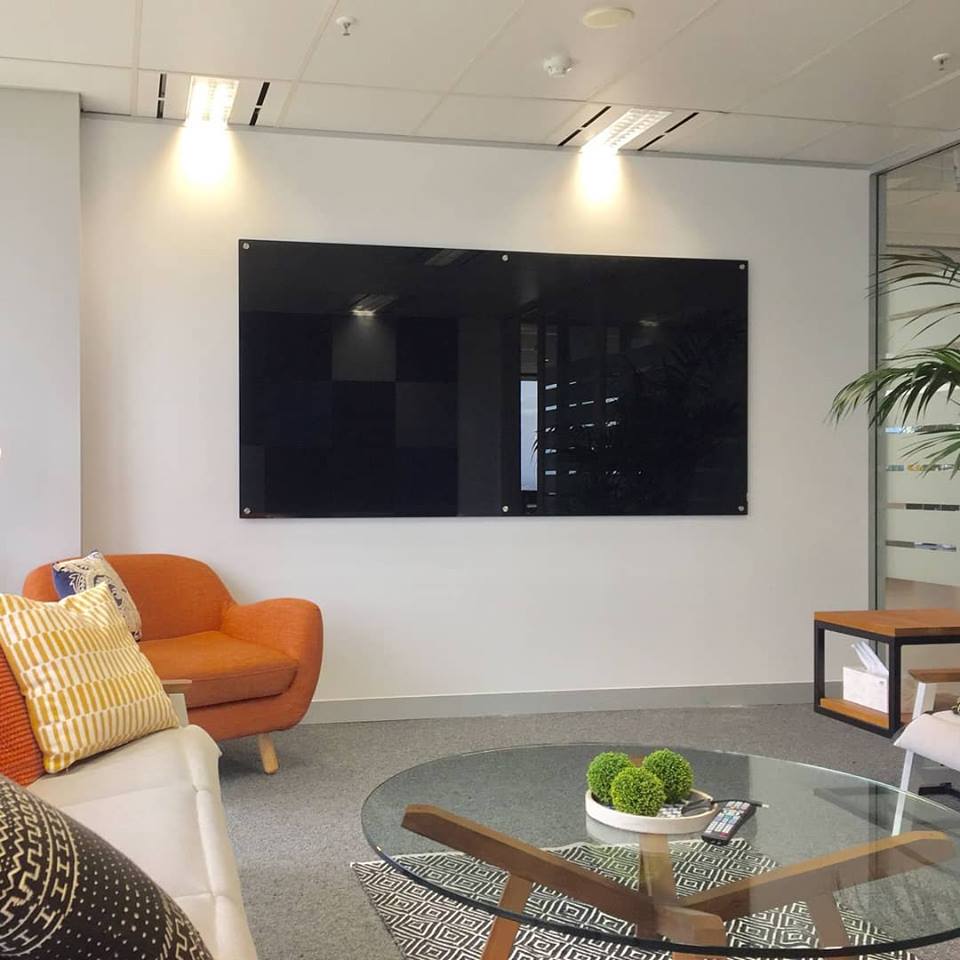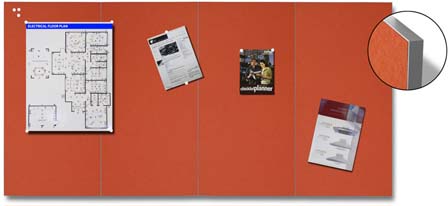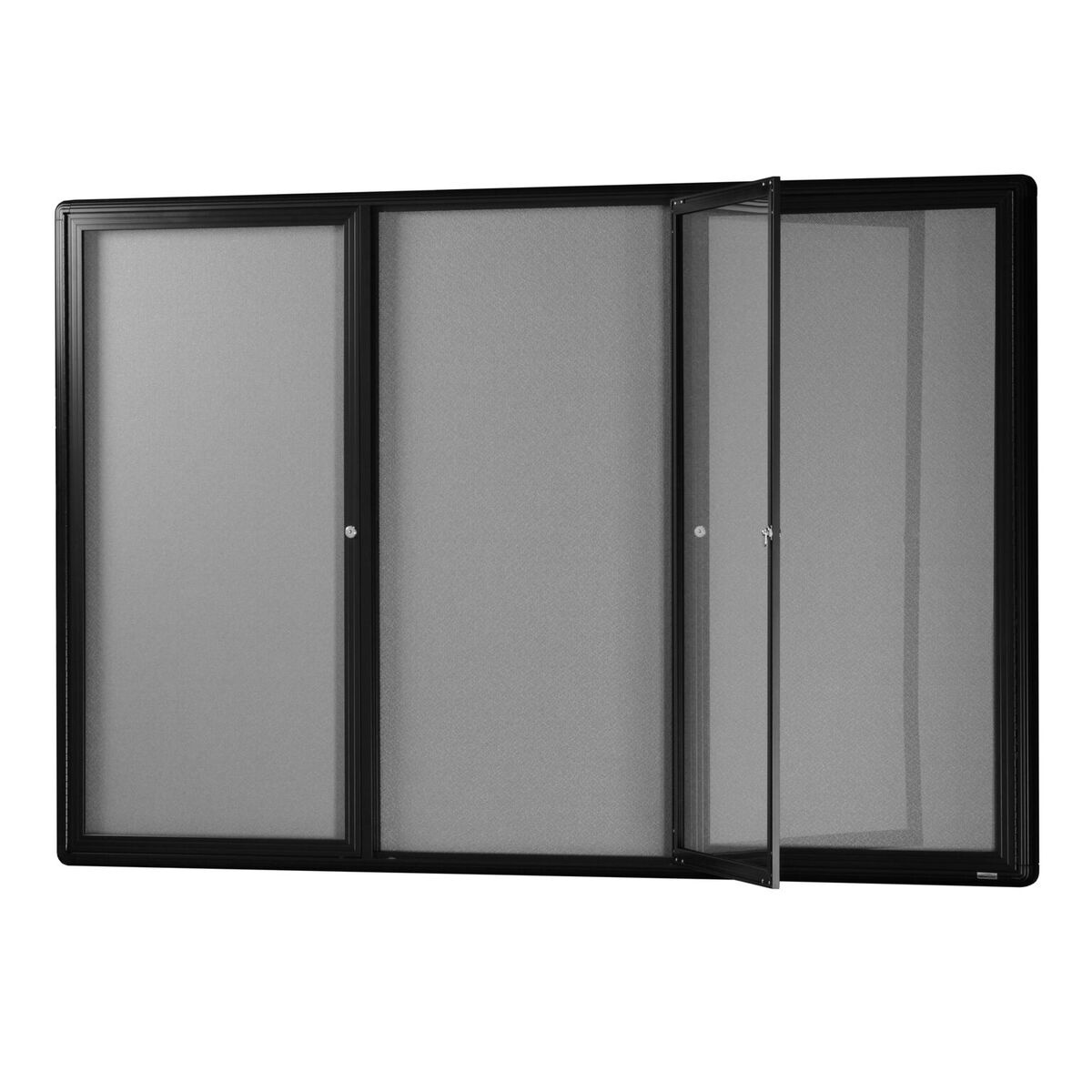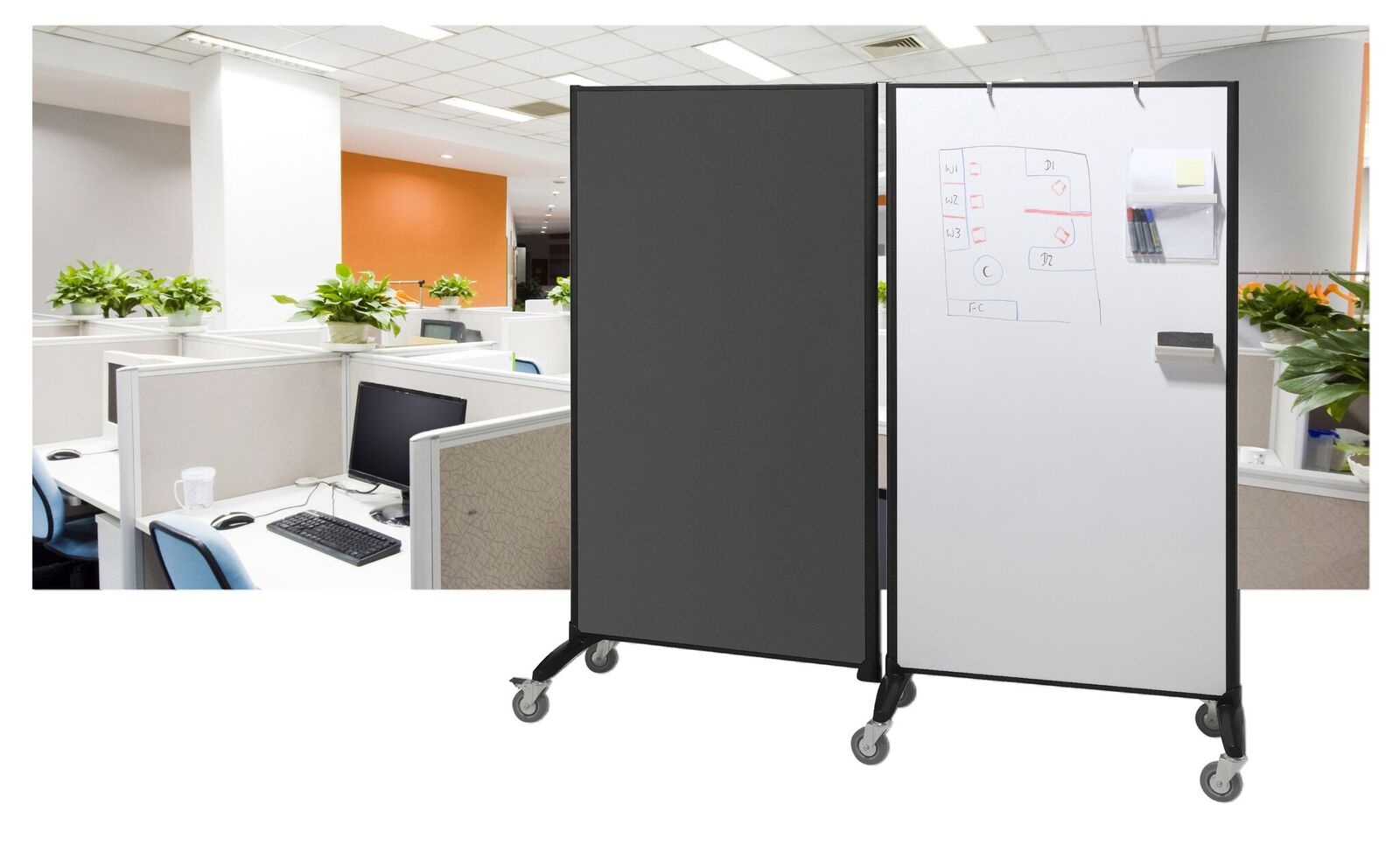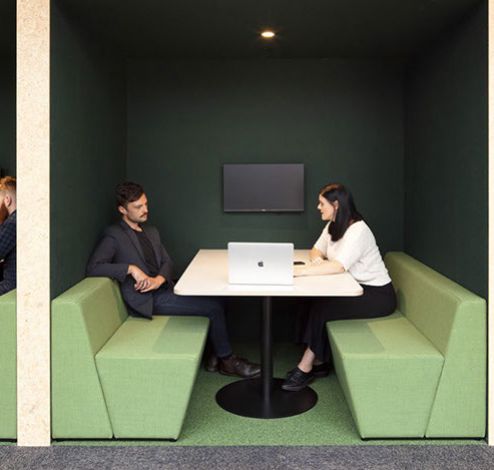Glass dry erase boards are increasingly popular in businesses, organisations and schools. Find out why glass is a perfect match for dry erase convenience.
Glass dry erase boards - all you need to know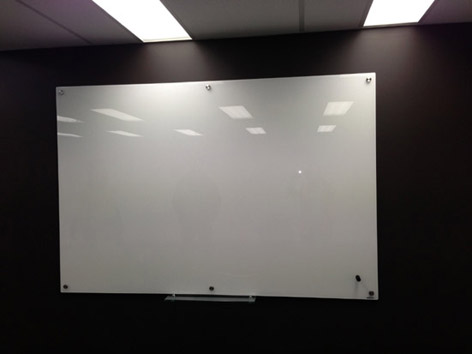
Dry erase boards have come a long way since their invention in the 1960s. Today, glass dry erase boards are leading the pack in terms of ease of use and aesthetics, but they wouldn’t be where they are without dry erase ink technology. So, what exactly is dry erase technology and what makes it so cool?
Here’s everything you need to know about dry erase boards: what they are, the history behind them and what makes glass the perfect match.
What is a dry erase board?
A dry erase board is a non-porous whiteboard that can be drawn on with dry erase inks and then easily cleaned. The act of erasing the special ink requires no moisture - hence the term “dry erase”.
Dry erase boards are cleaned with a piece of special equipment called a “dry wiper”.
Because they require no moisture to clean, dry erase boards are more convenient and easier to clean than wet erase boards.
What is the difference between a dry erase board and a whiteboard?
In simple terms: there isn’t one. All whiteboards are dry erase boards. This is because they don’t require moisture to clean, unlike blackboards which, although they can be rubbed out, still require cleaning with wet solutions to be truly erased.
Whiteboards originally got their name from their colour: white. White is a neutral colour with high contrast and easy readability, so early whiteboards were all this standard shade. Later iterations of such boards, including our glass dry erase boards, got an aesthetic upgrade with multiple colour choices, but the name “whiteboard” stuck.
The history of dry erase
The invention of the whiteboard is a tricky one, with two inventors vying for the honour of introducing dry erase technology to the world.
The first story credits a photographer called Martin Heit. Well before the age of digital photography, Heit had a surplus of negative film stored throughout his home. When talking to people on the telephone, he would take notes on the spare negatives using a marker pen. The writing could then be wiped clean with a damp cloth.
This practice led Heit to develop his first whiteboard which he kept as a note board next to his phone. Plans to unveil his invention to the world took a turn for the worst when his showcase at the Merchandise Mart, Chicago’s gigantic wholesaler centre, burned down the night before launch. Discouraged, Heit sold the patent for his whiteboard to a small company that would later become Dri-Mark, the organisation that led the mass-adoption of the whiteboard in the educational sector.
Another story of the invention of the whiteboard credits a fellow called Albert Stallion. While working at a company that produced enamelled steel for architectural cladding, Stallion noted its potential as a writing surface. He developed this idea into an invention and formed his own whiteboard production company called MagiBoards.
Whoever you believe, whiteboards were introduced to the world in the 1960s. Interestingly, early whiteboards were actually still wet erase boards. They needed to be wiped with a damp cloth and the markers often left stains even after erasure. This meant slow adoption of the technology for around 25 years until another inventor stepped up to solve the pen problem.
Jerry Wolf patented the first whiteboard pen in 1975 – a new type of marker that could be erased with a dry cloth and that left minimal ghosting after use. The secret to Wolf’s marker’s success was the ink – a non-toxic, powdery liquid that could adhere to a glossy surface without being absorbed.
On the back of Wolf’s invention, whiteboards roared into the mainstream. Just over a decade later, the whiteboard had largely replaced blackboards in the business world. Classrooms were the next to start mass use of the technology, for two reasons:
● Concerns over health problems in children with dust allergies
● The potential for chalk dust to damage computers, which were simultaneously appearing more frequently in classrooms
By the early 2000s, most schools in the wesern world had converted from blackboards to dry erase whiteboards. The rest, as they say, is history.
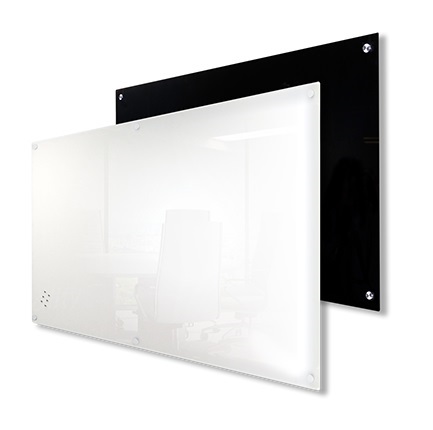 Types of dry erase boards
Types of dry erase boards
As mentioned, dry erase boards are whiteboards, but did you know that not all whiteboards are created equal? Here’s a quick rundown of the different types of whiteboard on the market today.
Melamine boards
Melamine whiteboards are made up of a substrate (typically particle board or MDF) which is coated with a dry erase layer made of resin-infused paper. The quality of these boards varies depending on:
● The quality of the substrate layer
● The type of substrate used
● The amount of resin infused into the paper.
Melamine boards are the cheapest whiteboards on the market and, in this case, you get what you pay for. Yes, they work fine at first but they don’t stand up to heavy use. Even those boards more resistant to staining will eventually wear out as the surface layer erodes.
Steel or aluminium boards (Commercial)
Steel or aluminium whiteboards are made up of a metal sheet coated with a multi-layer base colour followed by a clear “performance layer”. It’s this performance layer that makes up the dry erase component of the board. Similar to melamine boards, the quality of these boards varies. Commercial-grade materials will result in a better product, but even the best-quality metal whiteboard is susceptible to denting or scratching.
Porcelain boards
Porcelain whiteboards are typically made up of a steel board that has a ceramic layer fired directly onto its surface. This result is one of the more durable kinds of whiteboard on the market today. Porcelain boards are highly scratch resistant, leading to their use in industrial and other heavy-use settings. Most even come with a lifetime warranty. That said, even the most well cared for porcelain board can stain over time because the surface is nearly, but not perfectly, non-porous.
Glass dry erase boards
Glass dry erase boards are the cream of the crop when it comes to whiteboards. They’re high performance, aesthetically superior and built for heavy use. Made from tempered safety glass, glass dry erase boards are the easiest whiteboards to maintain. Even with heavy use, glass whiteboards don’t stain because - the surface is totally impermeable.
Types of markers for use on glass dry erase boards
What marker you choose for your dry erase board will depend heavily on your use and context. Here’s a quick run down of the different types of marker on the market right now.
Dry erase marker
Dry erase markers contain an ink made up of colour pigments, a chemical solvent and a polymer. This polymer is also known as a release agent and its what gives dry erase markers their dry erase properties.
The polymer in dry erase markers is an oily silicone substance that facilitates easy removal. (For context, permanent markers use an acrylic polymer that helps the pigment stick to the writing or drawing surface). Silicone polymer works to make dry erase marker ink more slippery, preventing the coloured pigment of the marker from coming into direct contact with the writing surface.
The solvent used in dry erase markers is what gives them the ability to stick impermanently to a surface. This solvent (usually an alcohol) works to dry the ink quickly, adhering it to whatever surface it’s been used on. It’s also why dry ink is the easiest to clean on whiteboards – the ink is dry and not liable to spread or smear when wiped off.
Wet erase marker
One of the best parts of dry erase boards is their ability to … well, dry erase. However, there are some contexts where a wet erase marker is more ideal, for example:
● Outdoor signage
● Menu boards
● Semi-permanent notices
● High-traffic areas.
While dry erase markers use alcohol as their solvent, wet erase markers use a quick-drying liquid paste. This paste is what makes the marker semi-permanent as it can’t be simply wiped away with a whiteboard eraser.
Liquid chalk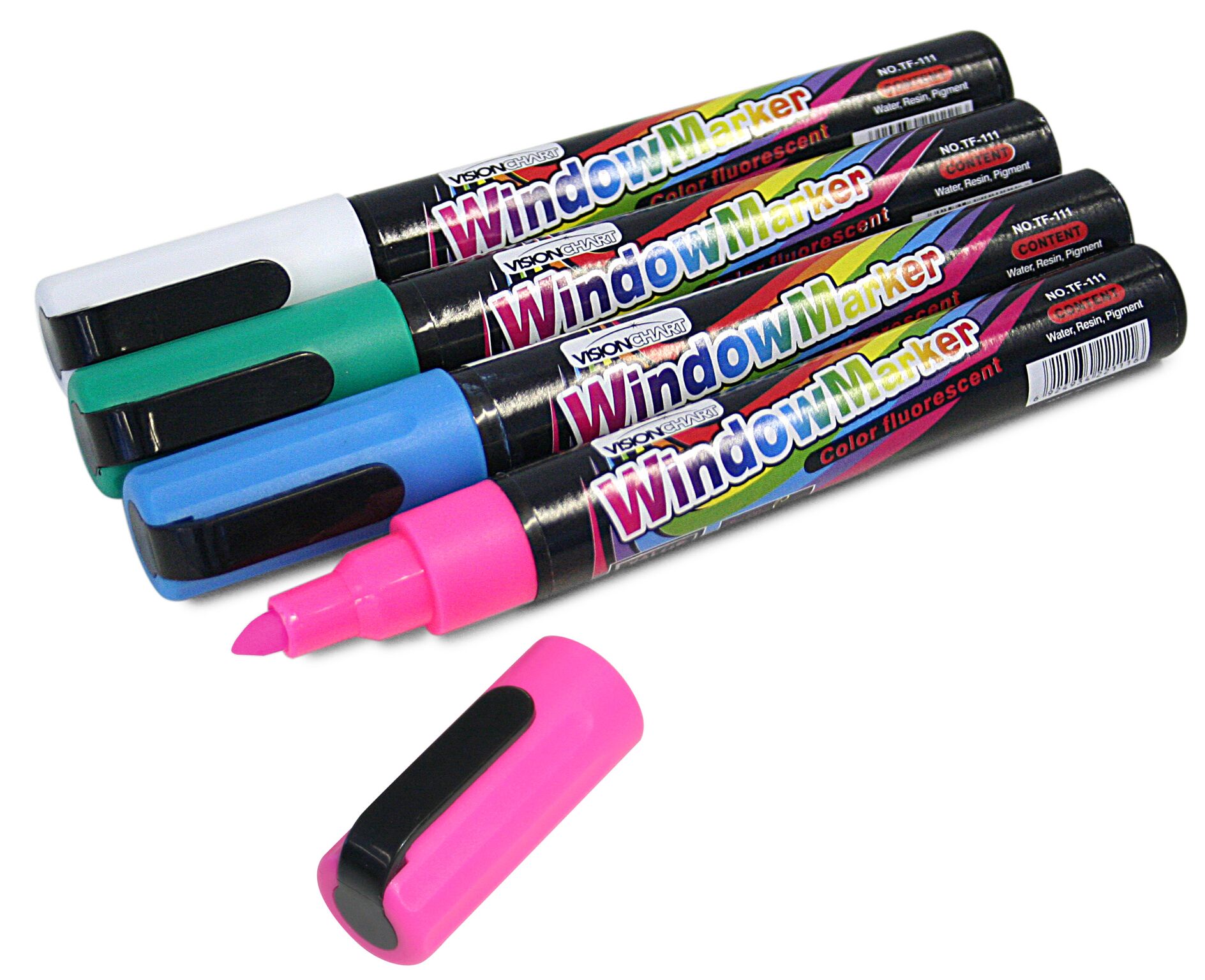
Liquid chalk is a special type of wet erase marker that’s designed to write not just on dry erase surfaces, but also on chalkboards. Liquid chalk is made up of chalk powder and a solvent that gives the liquid consistency until it dries.
Glass dry erase boards are leading the way
Dry erase technology has been around for a long time and has seen wide adoption in every industry from education to finance. Glass dry erase boards are the best on the market today, proving durable, easy to use and a dream to clean.
Get in touch today! Great service, great prices and Australia-wide delivery to your door. Call us today on 1800 654 917 or send an email to info@justboards.com.au
